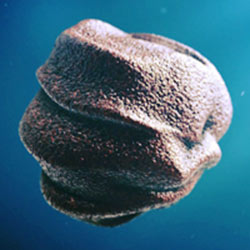Here's more of the last few weeks or so of assorted After Effects tutorials, tips, and scripts & plug-ins new and old.
Dan Borufka shows us how to Trigger Sounds and Animations by Markers in After Effects, and gives us presets. “To ease the process of event-driven repetition [like a typewriter], we put together two expressions for the time remap channel of compositions and sounds.” See also Copy, remove, & everything else about markers and Markers Leaks: trigger actions using AE layer markers.
Trevor Coates had a 5-part tutorial on Creating the Superman 3D Logo Entirely in After Effects, using Mettle ShapeShifter AE.
Red Giant had a few new tutorials (go to RGS for free projects):
- In Episode 90 – Tempo: The Bees Knees – 3D Bee Swarm w/ Slow Motion FX, Harry Frank walks “you through creating a swarm of bees using a combination of Cinema 4D, Trapcode Particular and Form, as well as tracking the camera motion, compositing the bees, and ramping time for slow-motion effects.”
- Episode 92 – Motion Graphics with Magic Bullet Looks by Simon Walker.
- Episode 93 – Tempo: Under Fire – Bullet Hits and Ricochet Sparks by Harry Frank “shows you how to use Trapcode Particular to generate realistic sparks like those seen from bullet hits and ricochets. He'll also talk about techniques for creating bullet holes and muzzle flashes”, and shares an expression. For more on the subject, see the roundup Muzzle flashes in After Effects.
Creating a Snow Mountain Title, by VinhSon Nguyen, looks at creating mountains, camera rigs, and windy atmospheres with Z depth maps, some compositing tips, and a landscape object from Cinema 4D.
A new version of the script Duplicate with Connections is now available, with specific fixes to work with Element 3D.
NOTE: there's an Element 3D V1.5.5 Public Beta release.
Create a Realistic Rippling 3D Organic Sphere in After Effects – Tuts+ Premium, by Mikel Calvo Abarzuza, requires Trapcode Particular, VCP's Optical Flares, Element 3d , and a subscription. Here's the preview:
If you've been wanting to (re-)visit blending or composite modes, there's a Blending mode reference in AE Help, the approachable Let’s Learn Math: Photoshop Blend Modes by Kevin Jensen, and a very techie version in the Portable Document Format reference on the Adobe website. Additional discussion can be found in CMG Hidden Gems: Chapter 9 – Blending Modes (from Creating Motion Graphics with After Effects) by Chris and Trish Meyer.
Here's Rob Garrott on Using After Effects blend modes to stencil text and create color effects and Mark Christiansen on Using color effects and blending modes:
CineGobs, known for the Windows freeware CineGobs Keyer, has made a native AE filter, Spill Replacer for After Effects 64 bit (Windows CS5+), available for free. Also free is the Pixel Bender version, which work in AE before CS5.5 and earlier. These plug-ins are no longer under development, and there were alternative techniques in the previous roundup.
DimensionVFX, a Spanish website formerly known as AElifesaver.com by Edén Expósito, is offering free oscillation behavior presets, Tutorial: Presets de oscilación para Adobe After Effects (translated to English), with supporting video tutorials in Spanish.
Free footage is increasingly offered, the latest is by alestemplestudio and Dave Berry's FREE time-lapse & abstract moving images. And in addition to free After Effects templates mentioned earlier, Motion Array has several footage files and projects for free.
Matt Brealey developed AESequenceExporter v1.0, an 'After Effects Exporter' for Hiero from The Foundry. “The exporter generates a .jsx file that when run inside of After Effects, creates and saves out the project for you.” Here's the tutorial:
Digital Sandwich has a quick video tip, After Effects Background Rendering with Adobe Media Encoder. The open secret is to drag & drop an After Effects project file into Adobe Media Encoder, but in the video below the point is well-framed. For more on AME, see Exporting media using Adobe Media Encoder CS5, CS5.5, & CS6 by Kevin Monahan.
Dylan White at Computer Arts shows you how to Produce a hand-drawn aesthetic in After Effects (ink on blotting paper).
And over at Digital Arts, Emanuele Colombo posted After Effects tutorial: Papercut animation techniques revealed, on “how to produce a 2.5D scene that appears to be made out of paper, creating elements in Illustrator and then animating them in After Effects.” Here's the end result:
Kevin Monahan noted that you can add a keyboard shortcut for Changing Track Height in Premiere Pro CS6. Even if you're not coming from FCP, you'll probably agree that this shortcut deserves a place in the default menus!
Kes Akalaonu recommended a tutorial from BestProAction that uses the Title Tool to create feathered edges, How to Fade the Edges of a Picture-in-Picture Video in Adobe Premiere Pro. Unfortunately there's no narration:
Please note that these roundups are for quick review and comparison. There is almost always vital information from the originating authors at the links provided-and often free presets, projects, or stock footage too.

